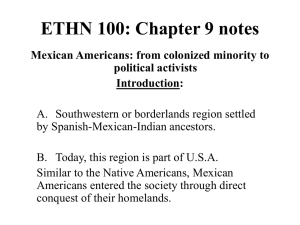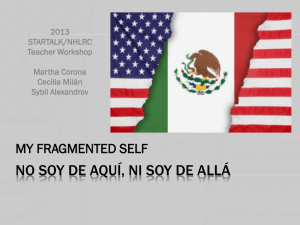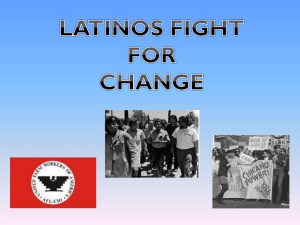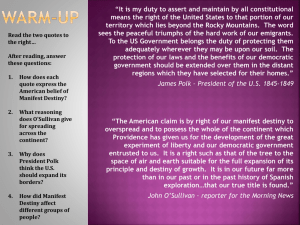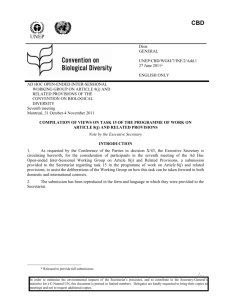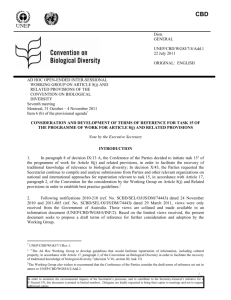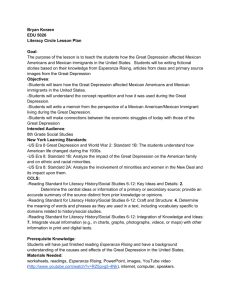The Great Depression and Repatriation
advertisement
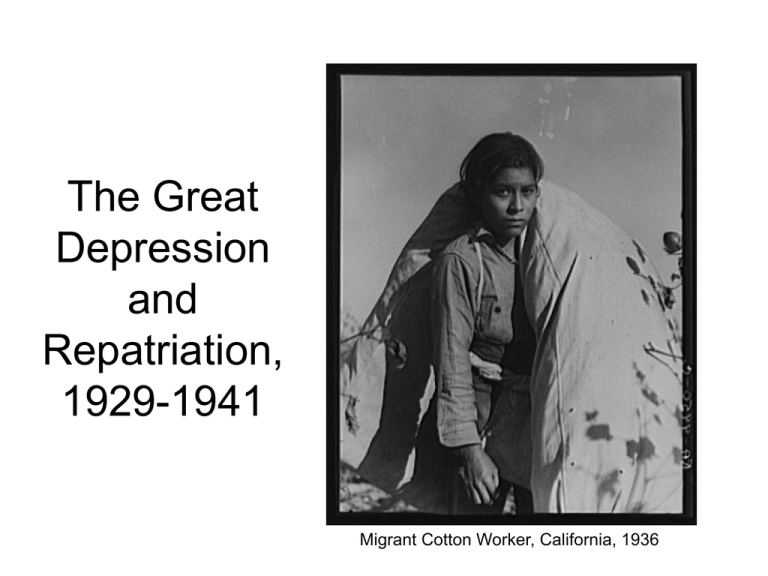
The Great Depression and Repatriation, 1929-1941 Migrant Cotton Worker, California, 1936 Major Themes Mexicans suffered from harsh economic conditions during the Great Depression, but they also endured a public narrative that defined them as undeserving of scarce jobs and public aid. Access to New Deal relief programs was difficult for many Mexican workers, though some did benefit. During the 1930s federal, state and local governments sent many Mexicans (both citizen and immigrant) to Mexico in order to reduce the number of people on relief. Some returned to Mexico voluntarily, but others were pressured to do so and some were deported. Labor organizing increased dramatically during this time period and Mexicans were active in forming their own unions and joining in interracial organizing efforts. Overall events of the 1930s fostered a greater emphasis in Mexican communities on a Mexican-American identity. Key Questions What New Deal programs excluded farm workers as a class? What is repatriation? How is it different from deportation? On the whole was “The Repatriation” voluntary or coerced? Were people born in the United States sent to Mexico as a result of repatriation efforts? What factors motivated the establishment of repatriation programs on the local level? Why did some Mexicans in Detroit want to repatriate while others did not? How did the Great Depression affect working conditions, wages and unionization? What impact did the Great Depression have on Mexican communities’ economic well-being and cultural identity? The Great Depression Access to Relief & New Deal Programs The Repatriation Repatriation or Deportation? Repatriation in Michigan From upper left in a clockwise direction: Housing for Mexican Sugar Beet Workers near Saginaw, Michigan, preparing dinner in same housing (both at the end of the Depression in 1941) and Diego Rivera painting the Detroit Murals. Labor Organizing Effects of the Repatriation on Mexican Communities Mexican man working on irrigation in Eloy, Arizona in 1940 who immigrated to the U.S. just prior to the Great Depression and Mexican woman protesting immigration law in California in 1941. Further Readings You can see video of the Memorial Day Massacre, and Guadalupe Marshall, at the following website: http://vimeo.com/10637926 Actual video footage from the day begins around 4 minutes in. Arredondo, Gabriela F. Mexican Chicago: Race, Identity, and Nation, 1916-39. Chicago: University of Illinois Press, 2008. Balderrama, Francisco E. Decade of Betrayal: Mexican Repatriation in the 1930s. Albuquerque: University of New Mexico Press, 2006. Blackwelder, Julia Kirk. Women of the Depression: Caste and Culture in San Antonio, 1929-1939. College Station: Texas A & M University Press, 1984. Guerin-Gonzales, Camille. Mexican Workers and American Dreams: Immigration, Repatriation, and California Farm Labor, 1900-1939. New Brunswick, N.J: Rutgers University Press, 1994. Latinas in the United States: A Historical Encyclopedia. Bloomington: Indiana University Press, 2006. Monroy, Douglas. Rebirth Mexican Los Angeles from the Great Migration to the Great Depression. Berkeley: University of California Press, 1999. Ngai, Mae M. Impossible Subjects: Illegal Aliens and the Making of Modern America. Princeton, N.J: Princeton University Press, 2004. Vargas, Zaragosa. Labor Rights Are Civil Rights: Mexican American Workers in Twentieth-Century America. Princeton, N.J: Princeton University Press, 2005. ———. Proletarians of the North: A History of Mexican Industrial Workers in Detroit and the Midwest, 1917-1933. Berkeley: University of California Press, 1993.





